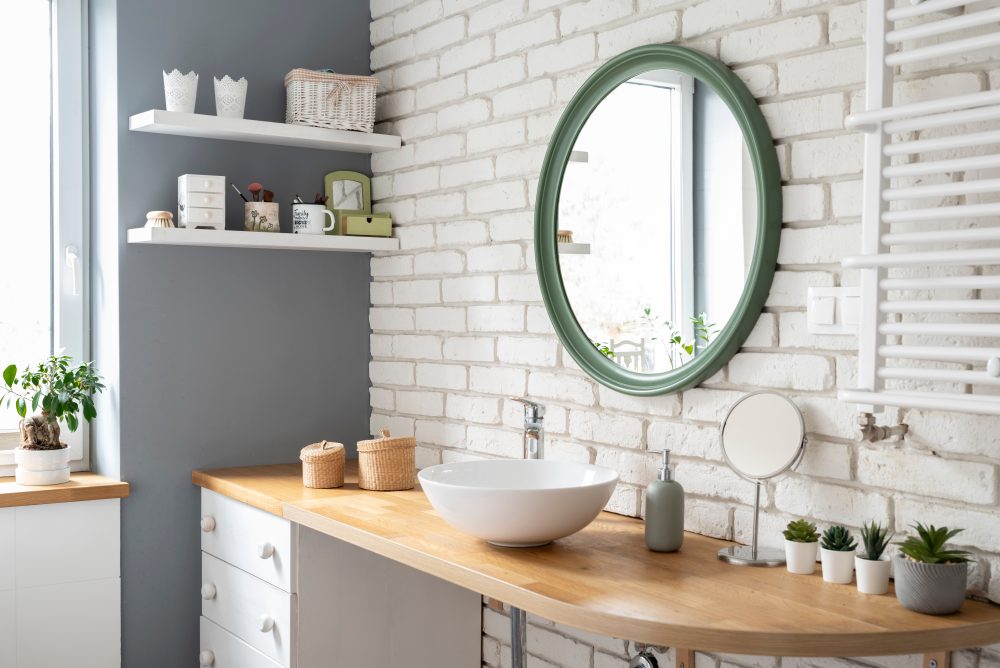If you are giving your bathroom a makeover, choosing the tiles will be high up on your list of things to do. They will protect your walls from wet areas, as well as being a strong style statement. So if you are in the middle of a bathroom renovation, read on to find out all you need to know about choosing bathroom tiles!
Tile Material – fabricated vs. natural
Tiles can be natural stone or fabricated. Generally, manufactured tiles are perfect if you are on a budget, plus they require less maintenance than a natural choice. Stone tiles, however, can bring opulence and interest to the space.
The main manufactured options are porcelain and ceramic. Porcelain tiles are extremely hard wearing and simple to look after. Plus, they can be used for both floors and walls. Ceramic isn’t as hard wearing – which means they are often best kept to walls rather than floors – but they are easy to look after.
For natural stone, marble is a common choice due to the gorgeous colours and veining patterns. Other options include limestone and slate – the latter being very slip resistant for floors.
Wall vs. floor tiles
A frequent question is whether to keep the same tiles for both floor and walls. The answer is, it depends.
The cohesive approach across floors and walls will bring a spa-like sleekness to your bathroom, and can help to bring the illusion of more space.
If you prefer to contrast, this can be subtle or more dramatic. For example, go for a gloss tile on the wall versus matt on the floor, or add variation with different shaped tiles. Patterned floors are very fashionable and will create impact. As will a feature wall around your shower. A stunning shower splash back will give you a boutique hotel vibe.
Tile Size and Shape
The bathroom size does not need to dictate the size of the tile. If you would like to use large tiles in a small bathroom, go for it. In fact, larger tiles mean less joins and grout lines which can make the room feel less cluttered, and therefore expanded. Similarly a rectangular tile can help to elongate a wall (like how stripes work), so use tile shape to transform your bathroom.
For larger bathrooms, a mix of sizes is great. You can use the large format to cover floors and walls, but break it up with smaller patterns or splashes of colour to create different focal points.
Metro tiles are the timeless choice, but there are some fantastic hexagon patterns for something with a designer look. You could also use mosaic to zone off areas around sinks or showers.
Pick your grout!
White grout is not the only option these days! The grout choice can be as much of a statement as the tile, and it does not need to match! A coloured hue can add life to an all-white bathroom. Or grey can add a sleek edge to a patterned tile. In addition, the darker grout is a good idea if you are concerned about the amount of traffic your floors will take.
Visit showrooms and order samples of both grout and tile to help you find your perfect match. What other tips can you share?




Leave a Reply